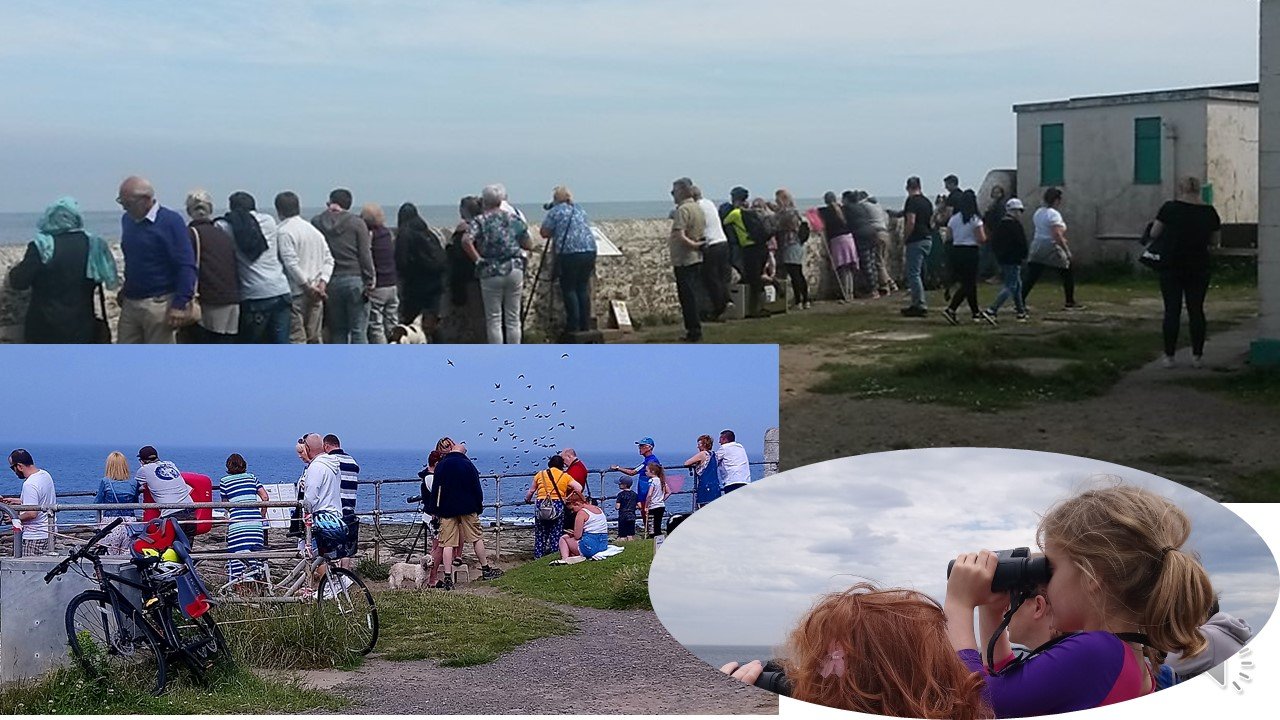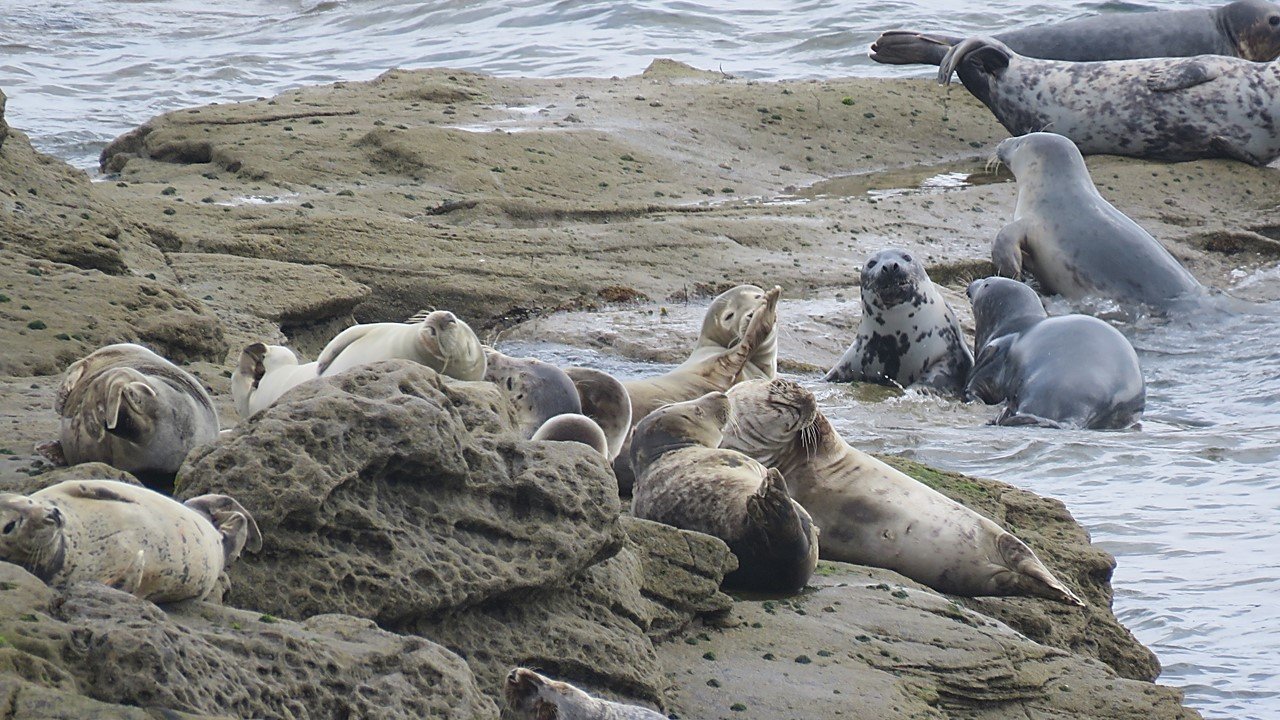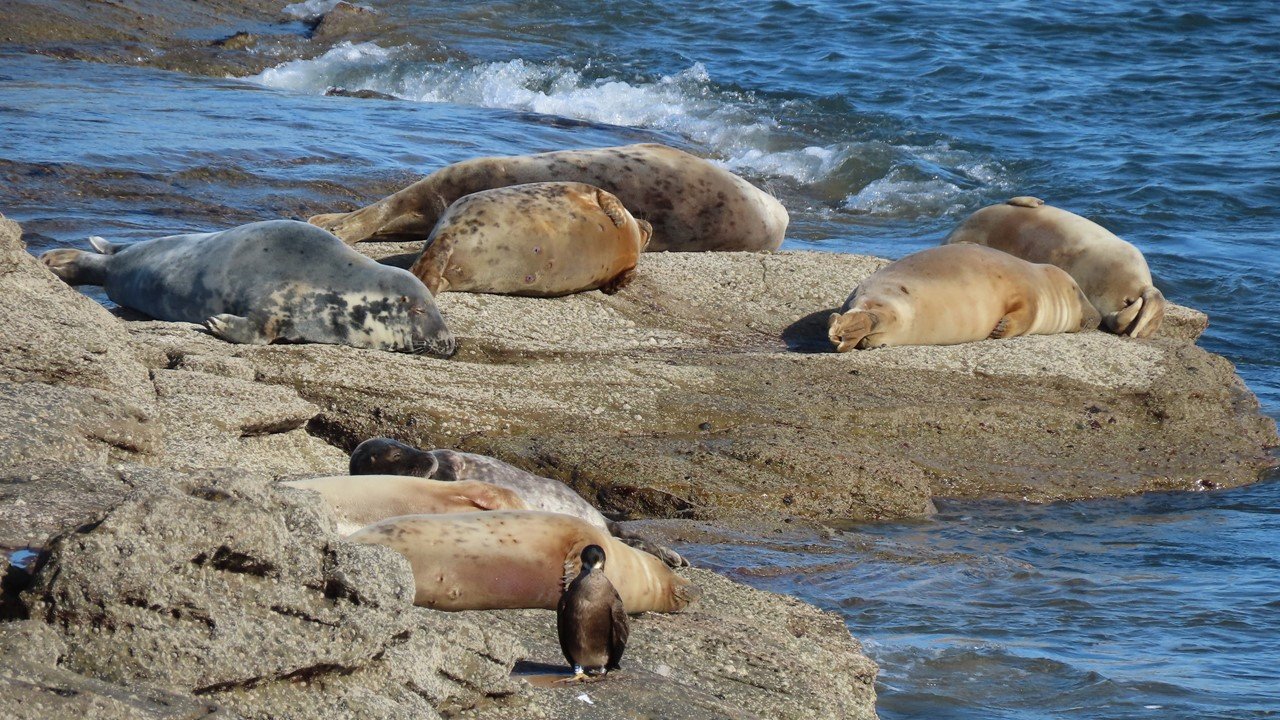Communities Are Doin' It For Themselves!
I would like to tell you about a place far up in the north of England and of a community coming together to proactively protect its local wildlife. The people make up St. Mary’s Island Wildlife Conservation Society, one of the groups forming The Seal Alliance. Connecting with others from around the UK and Europe through a shared species, a shared problem and a shared desire to find a solution.
The species of course is the grey seal and the problem disturbance.
Our site is not a remote island off the coast but a well-known tourist destination within the urban stretch of Newcastle and North Tyneside linked to land by a short causeway. The site is of ecological importance for a diverse range of wildlife. Despite its ecological significance the island has always been considered a place for human recreation with hundreds of thousands of visitors attracted to the lighthouse and surrounding shore every year. Prior to 2014, when the members of St. Mary’s Island Wildlife Conservation Society, then St. Mary’s Seal Watch came together, visitor pressure made many of the habitats unusable for the wildlife, especially the seals.
Seals were met with something we referred to as “the seal charge” where visitors would run from every direction, towards the unsuspecting animal usually just getting a glimpse of its back end as it made its way hastily across the rocks to the safety of the water. Any seals sustaining the initial onslaught were crowded around and harassed until they too were flushed from the rocks.
Haul out was largely unsuccessful and seals venturing to the site scouting for somewhere to haul out were met with wide eyed humans standing on the shoreline blocking their access. Most seals gave up and the opportunity for them to congregate in any number never happened.
Believing the site had so much more potential and that something could be done to improve the situation for these animals, a small group from the community set about trying to improve the conditions for the wildlife. So asking ourselves, are these low seal numbers a consequence of high disturbance levels rendering the site unusable as a habitat? Would better management of the historically high human footfall and recreational activity on this site make the habitat more usable for seals? Was such a change in an entrenched behaviour even possible?
Was there an alternative and better visitor experience that could offer the opportunity for wildlife to thrive? Where would you even start?
I think we can all agree that much of work protecting seals concentrates on changing human behaviour. Most people do not cause damage intentionally but do so because of a lack of information and the key to change was raising awareness. Along with a few guidelines!
The most effective way to influence behaviour on a local level is to make it personal. There is nothing more effective than that person-to-person banter. Having volunteers on site to engage with visitors coming to the island has always been at the forefront of our success. Even today, with a growing number of volunteers trained by and supported by long standing members of the team, it is considered the foundation of our work. Like ambassadorial mountain goats, the early volunteers scrambled across the rocks from dawn till dusk to explain to visitors why this habitat was so important, why the seals were there, the impact of disturbance and what, as visitors, they could do to help. Encouraging them to enjoy the wildlife from a distance.
A Facebook page ( https://www.facebook.com/stmaryssealwatch) was set up to reach a wider audience. The group designed and created simple friendly signs and information for visitors with basic seal biology facts and useful tips on how to recognise and prevent disturbance. Signs were and are still placed around the site dependant on tide and the seals location to encourage visitors to avoid certain parts of the small island.
Slowly visitors showed a willingness to give the wildlife space. Happy to soak up the views from within the elevated lighthouse compound away from the wildlife, where we provided the use of binoculars and scopes. Offering the free use of binoculars and spotting scopes as an alternative to close up approach was a game changer.
A very nervous local authority responsible for the nature reserve was encouraged to step up to, not just its responsibility towards the site but also by the growing numbers of visitors and members of the local community wanting better protection for the wildlife.
Almost immediately, things began to change and seals were able to haul out for lengthened periods. We now have a haul out where seals, once instantly flushed, can now be seen sprawled ungracefully across these intertidal rocks, or dozing undisturbed in the waters nearby.
It seemed that for many visitors asking them to make way for and adapt to nature on a nature reserve was not too much to ask for after all! And the spectacle of grey seals on St. Mary’s Island has become a site enjoyed by every generation from near and far. The influence of SMIWCS can be seen throughout the site and while disturbance inevitably still occurs, more so from the water these days, visitors have begun to adopt a more informed, responsible, and considerate appreciation of the reserve. The local authority while it has far to go, now works with the community showing signs of a genuine commitment to the wildlife. Where once wildlife was expected to survive amongst the plethora of human activity, it now has autonomy within a clearly defined (all be it voluntary) wildlife refuge area where all wildlife is allowed to thrive free from human interference.
The site still has problems, it will have until far more is done to protect not just the seals but all the wildlife. There are those who refuse to change their ways. There are those who think the seals should “go back where they came from” but there are many, many more who now feel a great sense of pride in the site. Volunteers are still onsite providing information on the wildlife and advise on enjoying it responsibly offering a very different but extremely positive experience for the visitors.
The rocks once almost void of wildlife are now set aside as a place for it to thrive. A site where the grey seal was rarely seen is now used by scores of seals of all ages, every day throughout the year. This occurrence is not a fluke. It is an example of how nature can be protected on a community level and it shows how quickly a natural habitat can begin to thrive when people simply give it space to do so. It is a result of the hard work and commitment of a community coming together to proactively protect its local wildlife. It is the reason why we should all try to do something no matter how small. It is testimony to how we can each make a difference and together influence change. It is a reminder that sometimes it all starts with us.
If this has inspired you to protect wildlife in your community, we are happy to help. Just get in touch.








